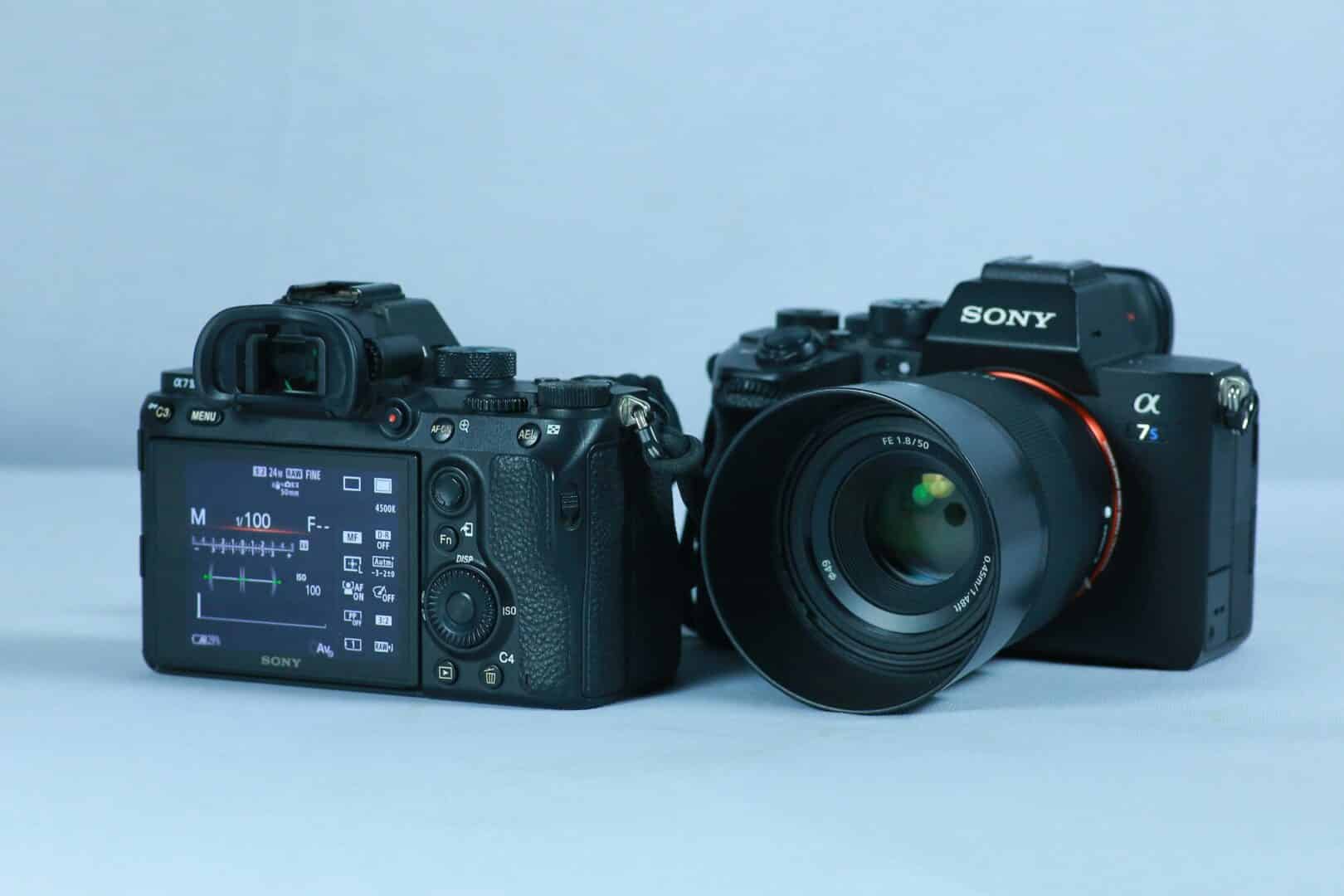Key Takeaways
-
Your Sony A7III can brave the elements with the right protection – essential for capturing stunning animal videos.
-
Weather-sealed cases, rain covers, and DIY solutions can shield your camera from rain, mist, and splashes.
-
Understand your camera’s limitations – the A7III isn’t fully weatherproof, so extra precautions are necessary.
-
Regular maintenance and proper storage will prolong the life of your camera and equipment.
-
Even in challenging conditions, you can achieve great results with a few adjustments to your camera settings.

Understanding the Elements: What Your Camera Faces Outdoors
When you’re out in the wild, capturing those once-in-a-lifetime shots of animals in their natural habitat, your Sony A7III is exposed to more than just the awe of nature. Rain, dust, and the occasional splash from a river or waterfall can wreak havoc on your gear if you’re not prepared. It’s crucial to understand the risks: moisture can seep into the smallest crevices, dust can scratch your lens, and a sudden downpour can end your shoot prematurely.
Essential Accessories for Your Sony A7III in Inclement Weather
To keep shooting no matter what Mother Nature throws at you, it’s important to gear up appropriately. Let’s talk about the non-negotiables for protecting your Sony A7III outdoors.
-
Weather-sealed camera case: These are a must-have to keep your camera body dry and functioning.
-
Protective lens filters: They not only protect your lens from scratches but also from the elements.
-
Microfiber cloths and lens cleaning solutions: Keep these on hand to wipe away any water droplets or dirt.
These accessories are your first line of defense against the unpredictable outdoors. Now, let’s dive into the specifics of how to use them effectively.
On-Location With Wild Animals: Maximizing Your Sony A7III’s Potential
Customizing Camera Settings for Changing Conditions
Imagine you’re out in the field, and the light is fading fast, or a sudden rain shower passes over. These are the moments when knowing your Sony A7III’s settings can make or break your shoot. Here’s what you can do:
-
Increase your ISO to maintain a fast shutter speed in low light – crucial for capturing sharp images of moving animals.
-
Use a wider aperture to let in more light, but remember this can reduce the depth of field, so keep your subject in focus.
-
Engage continuous autofocus to track animals on the move, ensuring you don’t miss the action.
With these tweaks, you’re well on your way to making the most of every shooting opportunity, no matter the weather.
Quick Tips: Keeping Your Camera Dry When Animals Splash or Crash
Sometimes, the animals you’re filming can cause a splash, literally. Whether it’s an elephant bathing or a bird diving for fish, you’ll want to be ready. For more in-depth advice, read about tricks for keeping focus during these unpredictable moments.
-
Always position yourself upwind from the action to avoid getting soaked.
-
Keep a rain cover at hand – they’re quick to deploy and can save your gear in seconds.
-
Stay aware of your surroundings and be ready to shield your camera with your body or a backpack if an unexpected wave comes your way.
Remember, it’s not just about protecting your camera; it’s about being ready to capture the action without hesitation.
Strategies for Fighting Off Fog and Mist
Fog and mist are like nature’s special effects, adding a touch of mystery to your animal videos. However, they can also cover your lens with moisture and reduce visibility. To combat this, use a lens hood to shield your lens from sideways mist. Also, keep silica gel packets in your camera bag to absorb excess moisture and prevent fogging from the inside out. If your lens does fog up, wait for it to acclimate to the temperature before wiping it to avoid smears.
Dealing with Dust and Sand during Beach Shoots
Beach shoots mean dealing with fine sand and dust, which can be a nightmare for your Sony A7III. Firstly, never change lenses on a windy beach; find a sheltered spot or use a clear plastic bag to create a makeshift clean room. Secondly, use a UV filter to protect your lens from abrasive sand particles. Finally, always carry a rocket blower to gently remove sand from your camera and lens without touching the surface.
It’s not just about the gear though, it’s about technique. When filming, keep your camera low to the ground for dramatic shots but use a tripod with wide feet to prevent it from sinking into the sand. And remember, if sand does get into your gear, don’t panic. A thorough clean post-shoot can work wonders.
And let’s not forget, a beach environment means saltwater. This can be corrosive, so after a beach shoot, clean your equipment with a damp cloth to remove any salt residue, and then dry it thoroughly.
Shooting in the Rain: Keeping Your Equipment Safe and Sound
Rain can add a dramatic flair to your animal videos, but without proper protection, it can also damage your Sony A7III. The first step is to use a rain sleeve – they’re inexpensive and effective. Make sure it’s securely fitted around your camera and lens, leaving no openings for water to seep in.
Also, be mindful of where you set your camera down. Even with a cover, placing it on a wet surface can lead to trouble. If you’re on a tripod, consider using umbrella holders that attach directly to the tripod, keeping your hands free and your camera dry.
Selecting the Best Rain Covers for On-the-Go Shooting
When it comes to rain covers, you have options. From disposable plastic sleeves to professional-grade waterproof covers, choose one that best suits your needs and budget. Look for covers with clear windows so you can still see and access your camera controls. A good cover should also allow you to connect to a tripod and have an adjustable opening for different lens sizes. For more detailed information, check out our guide on animal video production like a pro.
DIY Protection: Clever Hacks on a Budget
If you’re in a pinch or prefer the DIY route, you can fashion a rain cover from a clear plastic bag and some rubber bands. Cut a hole for the lens to poke through and secure it with a rubber band. It’s not pretty, but it’ll do the job until you can get your hands on something more robust.
Another budget-friendly tip is to use a shower cap. They’re elasticated, waterproof, and can be stretched over your camera body in seconds. Keep a few stashed in your bag for those unexpected downpours.
Ensuring Longevity for Your Sony A7III in Outdoor Environments
The key to your Sony A7III’s longevity is maintenance, especially after exposure to harsh conditions. Always clean your camera and lenses after each outdoor shoot. Use a soft, dry cloth for the body and lens exteriors, and use a blower to remove any particles before they can scratch your gear.
Regularly check your camera’s rubber seals and gaskets for wear and tear. These are your camera’s main defense against the elements, and if they’re compromised, so is your camera.
For instance, after a rainy day shoot, I always take the time to carefully dry off my equipment and check the seals. It’s this kind of attention to detail that has kept my Sony A7III in top condition for years.
This kind of meticulous care will ensure that your camera is always ready for your next adventure.
Caring for Your Camera Post-Shoot: A Step-by-Step Guide
Once you’re back from the field, follow these steps to care for your camera:
-
Wipe down the exterior with a dry cloth to remove any moisture or dirt.
-
Use a blower to dislodge any dust from the lens and body.
-
Clean the lens with a lens-specific cleaning solution and a microfiber cloth.
-
Remove the battery and memory card and store them in a dry place.
-
Leave your camera in a well-ventilated area to air out before storing it away.
By following this routine, you’re not just cleaning your camera; you’re preserving its life and performance.
Storage Solutions to Keep Your Gear Pristine Between Adventures
Storing your Sony A7III correctly is just as important as using and cleaning it properly. Keep your camera in a dry, cool place away from direct sunlight. Use silica gel packs in your storage area to control humidity and prevent fungus growth. And consider investing in a hard case with padded inserts for the ultimate protection, especially if you travel frequently.
With these steps, your Sony A7III will be ready for whatever conditions your next animal videography adventure may bring.
Storage Solutions to Keep Your Gear Pristine Between Adventures
After each adventure, where you’ve braved the elements to capture those breathtaking animal moments, ensuring your Sony A7III is properly stored will keep it in pristine condition for your next outing. A dry cabinet or a storage space with controlled humidity is ideal. Silica gel packets are your friends here, helping to keep moisture at bay. If you’re frequently on the move, consider a sturdy, padded case that can take a knock or two and keep your gear safe from the jostles of travel.
Frequently Asked Questions
Now, let’s tackle some common queries that might pop up when you’re planning to take your Sony A7III out into the wild.
Can the Sony A7III withstand rain without any protection?
While the Sony A7III is built to be robust, it’s not entirely waterproof. A bit of drizzle might not harm it, but it’s not designed to handle a downpour. It’s better to be safe than sorry, so always use a rain cover or protective housing when the weather turns sour.
Without protection, rain can seep into the electronic components and cause damage, sometimes beyond repair. It’s essential to use a rain cover even for light precipitation to ensure your camera’s longevity.
What should I do if my Sony A7III gets wet or shaken?
If your camera does get wet, the first thing to do is turn it off and remove the battery. Wipe it down with a soft, dry cloth and allow it to air dry completely before attempting to use it again. Avoid using heat sources like hair dryers, as these can cause further damage. For more detailed information, check out our guide on how to capture your pet’s adventures with stunning clarity on video, which includes tips on protecting your camera in various conditions.
If your camera takes a knock, check for any visible damage. If it still functions, run through all the settings to ensure everything is working correctly. If you notice any issues, it’s best to get it checked by a professional.
How can I protect my lenses when filming in adverse weather or rough terrain?
Protecting your lenses is crucial when shooting in challenging environments. Here are some tips:
-
Use UV filters to protect the front element of your lenses from scratches and dust.
-
Always have lens hoods attached to guard against rain and reduce lens flare.
-
Carry multiple lens caps and keep them on whenever you’re not shooting.
Remember, lenses are the eyes of your camera. Keeping them protected ensures you’ll always see the world clearly through your viewfinder.
And for those times when you’re moving through rough terrain, a sturdy camera strap that keeps your camera close to your body can prevent accidental bumps and drops.
Are there weather-resistant alternatives to the Sony A7III?
Yes, there are cameras designed with more robust weather-sealing than the Sony A7III. For instance, some higher-end models from brands like Canon and Nikon offer better protection against the elements. However, these often come at a higher cost and with additional weight.
Can I create a DIY rain cover that’s as effective as commercial options?
A DIY rain cover can certainly get you out of a bind, and if done correctly, can offer a good level of protection. A clear plastic bag and some ingenuity can go a long way. However, commercial options are specifically designed with camera operation in mind, offering better access to controls and more reliable protection.
Ultimately, your choice depends on your budget, the conditions you expect to encounter, and how much you’re willing to risk your gear. For occasional light rain, a DIY solution might suffice, but for regular shoots in unpredictable weather, investing in a commercial cover is advisable.
When filming outdoors, especially for dynamic animal videos, it’s crucial to protect your camera from the elements. The Sony A7III is a robust camera, but it still needs shielding from rain, dust, and wind. Whether you’re capturing the grace of a bird in flight or the raw power of a cheetah on the hunt, ensuring your gear is safeguarded against weather can make the difference between a successful shoot and a missed opportunity.




